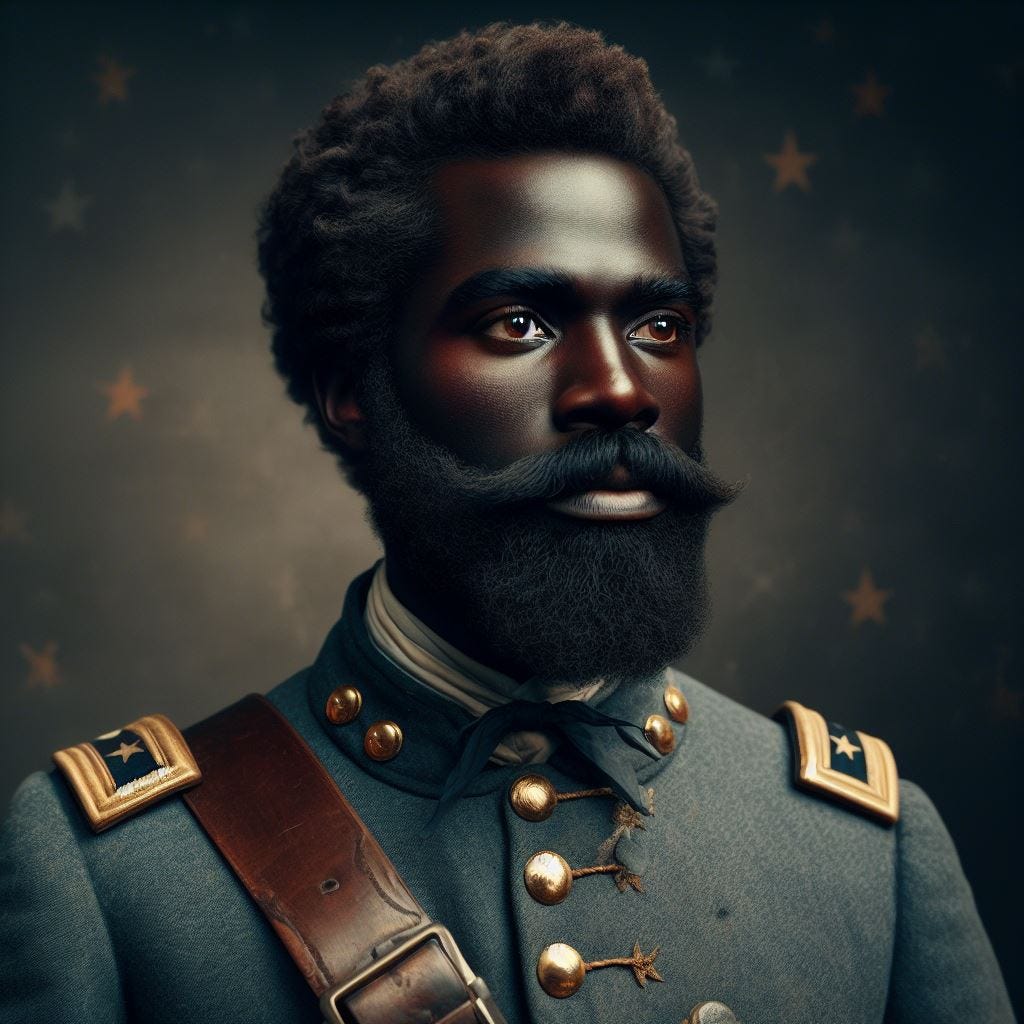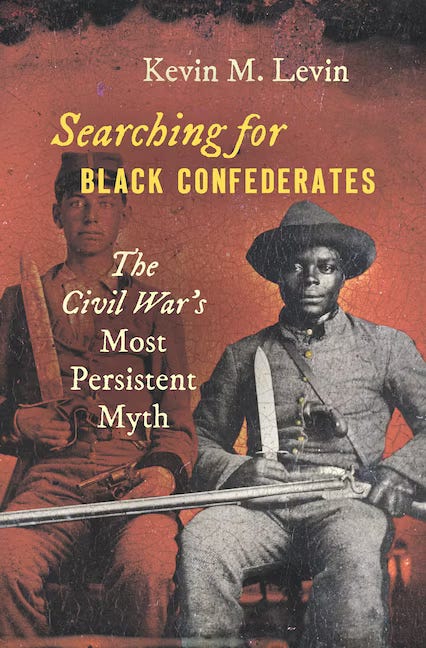The Black Confederate Myth, Artificial Intelligence, and the Challenges of Historical Interpretation
Read to the end for an opportunity to upgrade to a paid subscription at 50% off TODAY ONLY.
It was just a matter of time before someone used AI to construct an image of a Black Confederate soldier. It’s not very good, but I suspect that as the technology advances we will see more and more fake photographs of Black men in Confederate uniform that are indistinguishable from your favorite Matthew Brady or Alexander Gardner print.
What does this mean for the production and consumption of history? It’s hard to say. Historians and especially history educators have written about the implications of AI for the study and teaching of history. ChatGPT will soon have the ability (if it doesn’t already) to write essays and research papers on a wide range of subjects and with a certain depth of interpretation.
It’s not surprising that many of my friends in the field have expressed concern that AI will fundamentally change the field of history education. Perhaps, but I am old enough to remember when concerns about the Internet itself sent my fellow history teachers in a tail spin over a whole host of issues, myself included.
The Internet certainly did present challenges, but most of us eventually came to understand that, like anything, it is a tool that can be used to enhance teaching. For many of us, it revolutionized how we teach the subject.
I am optimistic that we will come embrace AI in much the same way.
After posting the above image on Bluesky, I received the following reply:
African Americans had their bodies stolen from them under slavery. Here someone has expropriated blackness, exploiting the fictitious image of an African American man to suggest that Black people fought for slavery rather than bravely resisting it. Like slavery, it’s a despicable kind of theft.
I couldn’t agree more, but the more I think about it, the more I’ve come to realize that this image poses the very same challenges that we’ve faced now for decades in regards to real photographs of Black men wearing Confederate uniforms.
The “theft” depicted in this image has been true of the manipulation and misunderstanding of primary sources related to enslaved Black men in the Confederate army since the mid-1970s.
I was never naive enough to believe that my own book on this subject was going to solve the problem once and for all.
It’s a continuous process of meeting people where they are and trying to help them develop their ability to ask questions centered around investigation and interpretation.
What is the source of the image?
Who is the author of the website?
How did the Confederacy’s policies on the use of enslaved men evolve during the war?
What did people say at different times during the war about the issue of slave enlistment?
What was the experience of Confederate soldiers and the enslaved during the war?
…and so on.
The humanities and its emphasis on critical thinking has never been more important.
I would like to think that this site has played a tiny, but important role, in helping people wade through these difficult questions. The goal has never been to get people to think what I think, but to help them develop the skills and understanding that will allow them to arrive at their own conclusions.
After close to 20 years of writing online about the history and memory of the Civil War, I still get great joy from sharing my passion for this subject and helping others.
On this first day of 2024, I can say with confidence that I am not going anywhere.
Thanks to all of you for taking this journey with me. I couldn’t have done it without you. As an expression of my appreciation, I would like to offer you an opportunity to upgrade to a paid yearly subscription at 50% Off. This offer is only good until the end of the day and you will be able to renew at this rate forever.
Your support makes it possible for me to post regularly, conduct interviews with some of your favorite historians and writers and organize private events such as movie and book discussions. Most importantly, your support makes it possible for me to work with organizations that train history educators, but don’t always have a large financial budget.
Have a Great Year!






You’re staying - HURRAH!!! With a Kepi toss!
Being the material culture person I am, I first saw some absolute fantastical farbiness in this image. Looks like some Brazilian General in 1887 or something. But that reminded that this technology is being used for more benign purposes as well. Check a recent Civil War Monitor with Grant and Longstreet all but embracing with Longstreet wearing some bad uniform parts. So that took me to the fact that those type of magazine have been producing photo illustrations and regular illustrations for as long as I can remember. Add to that, see all of the trashy Civil War "art" that uses, pretty obviously, reenactors as models.... and you can always tell they're reenactors because they're just not historically accurate. Hell, I remember a museum gift shop in NC that sold a pencil sketch of HK Egerton as a "Confederate soldier."
Don't know where I'm going with this. Your correspondent has a great point to add to the list of reasons this is bad, but we've been dealing with bad representations of historical people in modern imagery for quite some time. Hell, many of those old CS statues look more like an 1894 dandy wearing a UCV uniform than any photograph of an actual Civil War soldier.